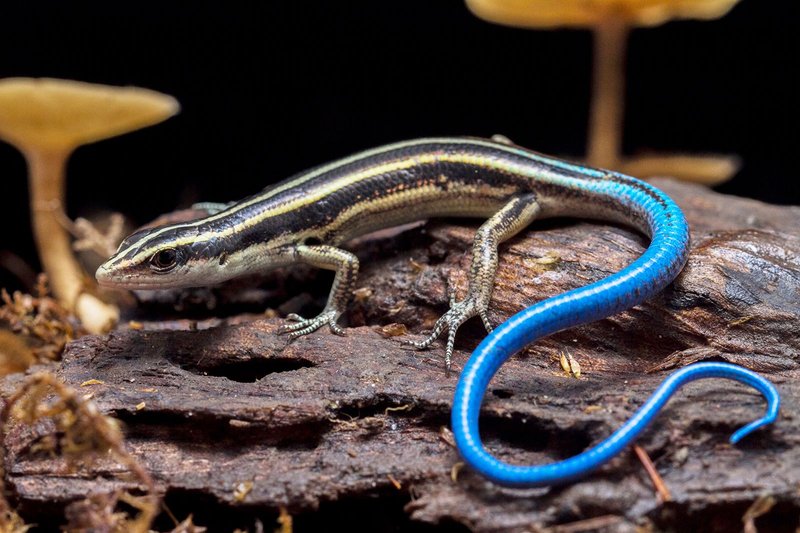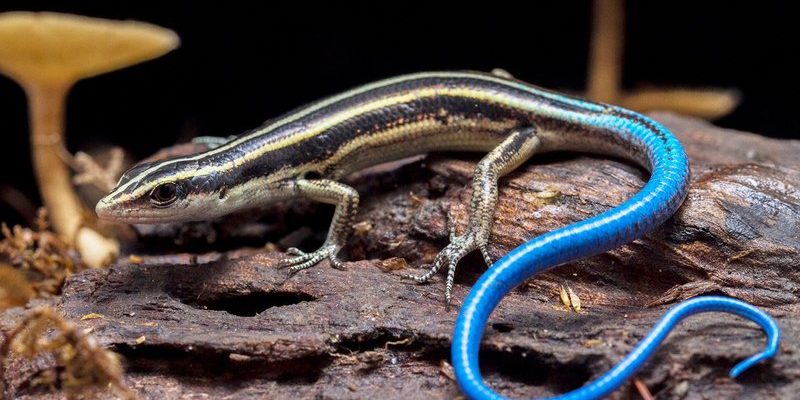
Think of skinks as superheroes of the reptile world, equipped with special powers to deal with their surroundings. They’ve learned to become masters of camouflage, burrowing, and even self-defense tactics. In this article, we’ll dive into the fascinating adaptations that make skinks such resilient creatures.
Unique Body Structures
Skinks possess a sleek and elongated body shape that’s quite different from many other lizards. This design isn’t just for show; it allows them to move quickly through narrow spaces and dense vegetation. With their smooth, shiny scales, they can slip into the tiniest crevices, escaping predators or harsh weather conditions.
On top of that, many skink species have developed reduced or even absent limbs. This may seem unusual at first, but it actually aids them in burrowing or slithering through the underbrush with ease. You might be wondering why some skinks look more like snakes than lizards. These adaptations, while they may seem odd, have evolved over time, proving to be effective survival strategies.
Another neat feature is their regenerative tails. If a skink loses its tail while escaping a predator, it can grow a new one over time. This not only helps them evade danger but also allows them to maintain balance and maneuverability while on the run. It’s like having a superpower that comes in handy during life-or-death situations!
Camouflage Skills
Camouflage is a crucial survival tactic for skinks. These creatures often have colors and patterns that blend seamlessly with their natural surroundings. Whether it’s a sandy desert or a lush green forest, skinks can disappear into their environment at a moment’s notice.
Imagine you’re walking through the woods and a skink catches your eye because it’s basking on a sun-warmed rock. But, as soon as it senses danger, it darts back into the underbrush, making it practically invisible. This ability to blend in is vital for avoiding predators like birds of prey and snakes.
Moreover, the texture of their scales can also help them camouflage. Some skinks have rough scales that mimic the bark of trees or the textures of rocks, further enhancing their disguise. It’s a clever trick that allows them to live life on their terms, outsmarting potential threats without breaking a sweat.
Behavioral Adaptations
Skinks aren’t just about physical features; their behavior plays a huge role in their survival, too. One fascinating example is their burrowing habit. Skinks often dig burrows, creating cozy homes that provide shelter from extreme temperatures and predators. These underground hideouts can keep them cool during hot days and warm during chilly nights.
Speaking of temperatures, skinks are ectothermic, meaning they rely on external heat sources to regulate their body temperature. You might see them basking on rocks during sunny days, soaking up the warmth. When it gets too hot, they retreat to the shade or their burrows, showcasing their ability to adapt to changing environments.
Additionally, skinks often exhibit social behaviors that help them thrive. For instance, many species engage in communal living, sharing burrows and resources. This behavior not only provides safety in numbers but also helps them find food more effectively by working together.
Dietary Adaptations
When it comes to food, skinks are versatile eaters. Their diet typically consists of insects, small invertebrates, and sometimes even fruits and plants. This flexibility allows them to thrive in various environments where their preferred food sources might not always be available.
Let’s say food is scarce in one area; a skink can easily adapt its diet to include whatever is on hand. This adaptability is crucial for survival. Imagine being able to change your diet completely just to keep yourself fed—that’s the reality for skinks!
Some skink species are even known to scavenge when necessary. They might consume the remains of other animals, making sure not to waste any opportunity for a meal. This strategy shows how resourceful skinks can be, ensuring they get the nutrients they need to survive.
Reproductive Strategies
Skinks also employ unique reproductive strategies that contribute to their survival. Depending on the species, they can lay eggs or give live birth. By having a varied reproductive approach, skinks can adapt to their surroundings and environmental conditions.
For instance, in cooler climates, live birth can be advantageous. It allows the young to develop in a more stable, controlled environment, increasing their chances of survival. In warmer areas, egg-laying can be the best choice, as the warm ground can help incubate the eggs more efficiently.
Additionally, skinks often produce multiple offspring at once, boosting their chances of survival. The more little skinks they have, the greater the chance that some will reach adulthood despite threats from predators or environmental challenges.
Predator Evasion Techniques
Skinks are masters at avoiding predators. Beyond their camouflage and quick movements, they often use distraction techniques, such as dropping their tails when caught. As we discussed earlier, this regenerative ability allows them to escape while their tail continues to wiggle, diverting a predator’s attention.
Another clever strategy is their speed. Skinks can dash quickly in various directions, making it harder for predators to catch them. Think of them as the sprinters of the reptile world—fast and agile, giving them a fighting chance when it matters most.
Their behaviors also include vigilant observation. Skinks are always on the lookout, using their keen eyesight to spot potential threats early. This awareness helps them react swiftly and find safety before danger gets too close.
In the world of reptiles, skinks stand out as remarkable survivors. Their unique adaptations—from body structures and camouflage skills to dietary flexibility and reproductive strategies—illustrate how evolution shapes creatures to thrive in various environments. Honestly, these tiny lizards are like nature’s little marvels, equipped with everything they need to outsmart the odds.
With their clever behaviors and quick actions, skinks show us that adaptability is key to survival. Whether they’re hiding in plain sight or bustling through the underbrush, skinks remind us just how resilient life can be. So, the next time you spot one, take a moment to appreciate the incredible journey they’ve taken to thrive in their environment. They truly are the unsung heroes of the animal kingdom!

